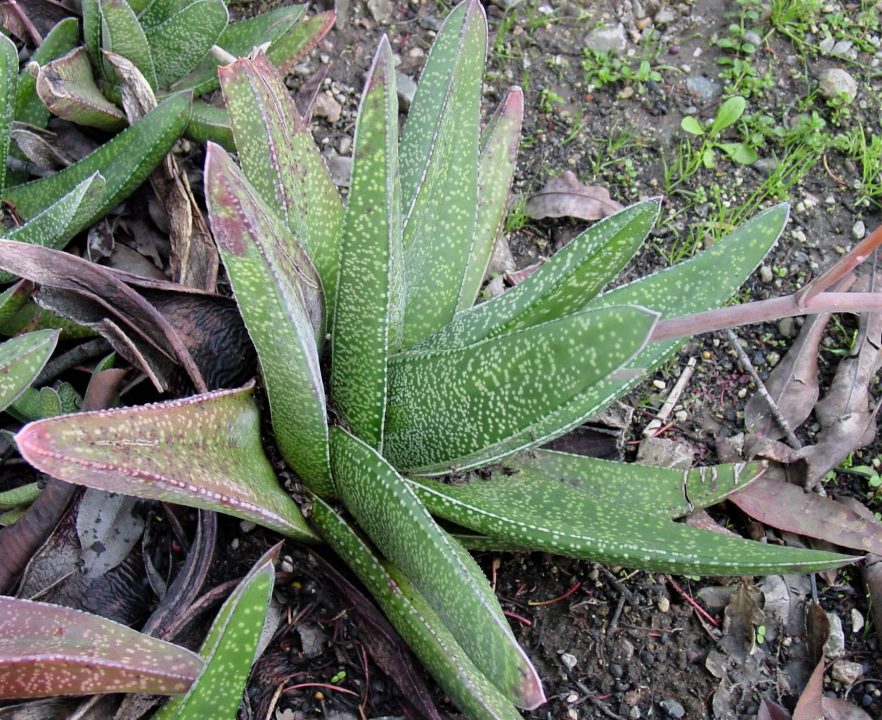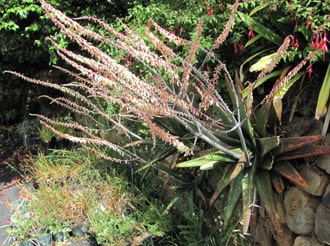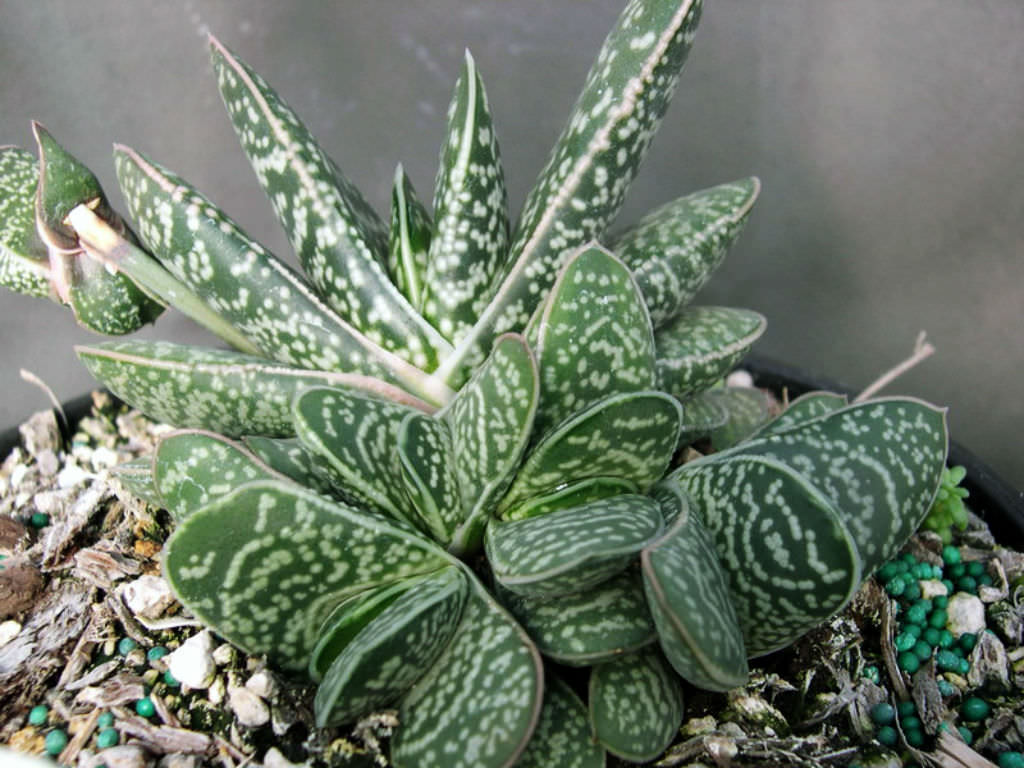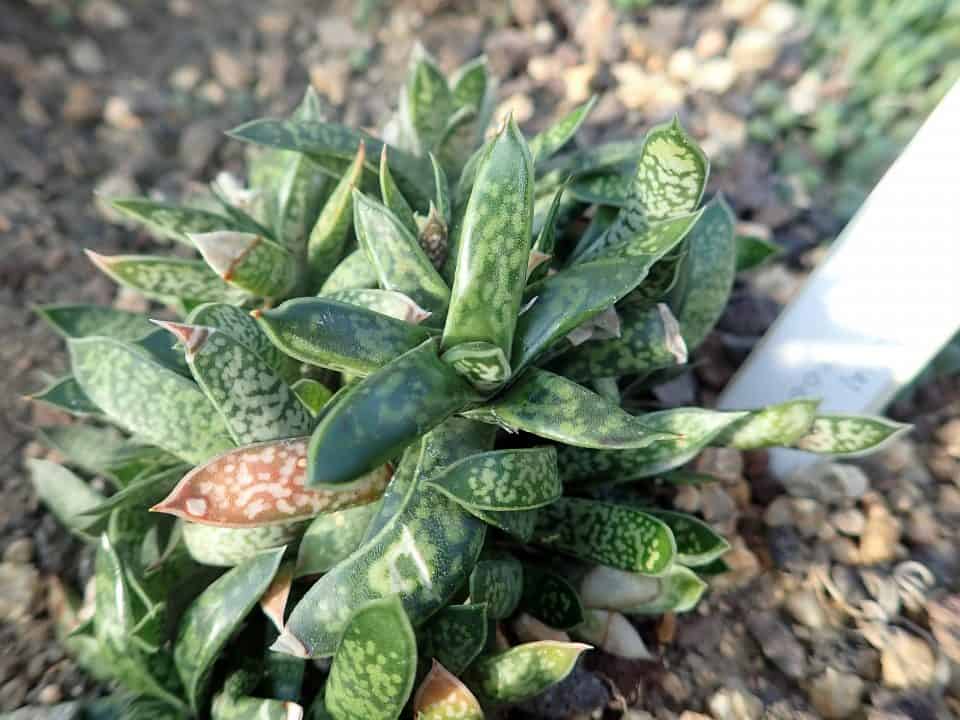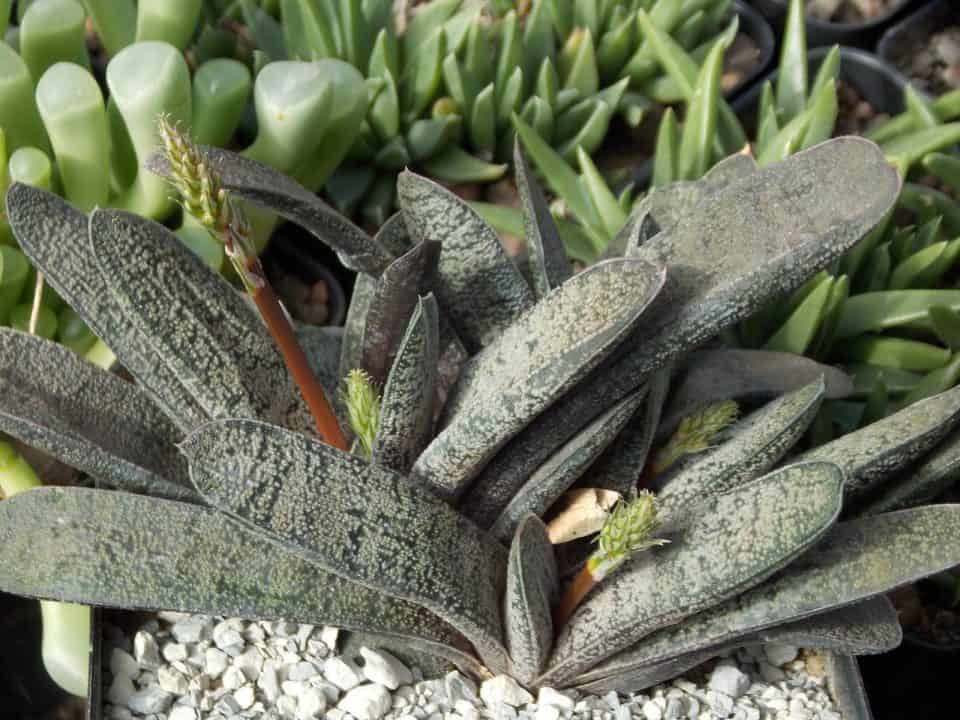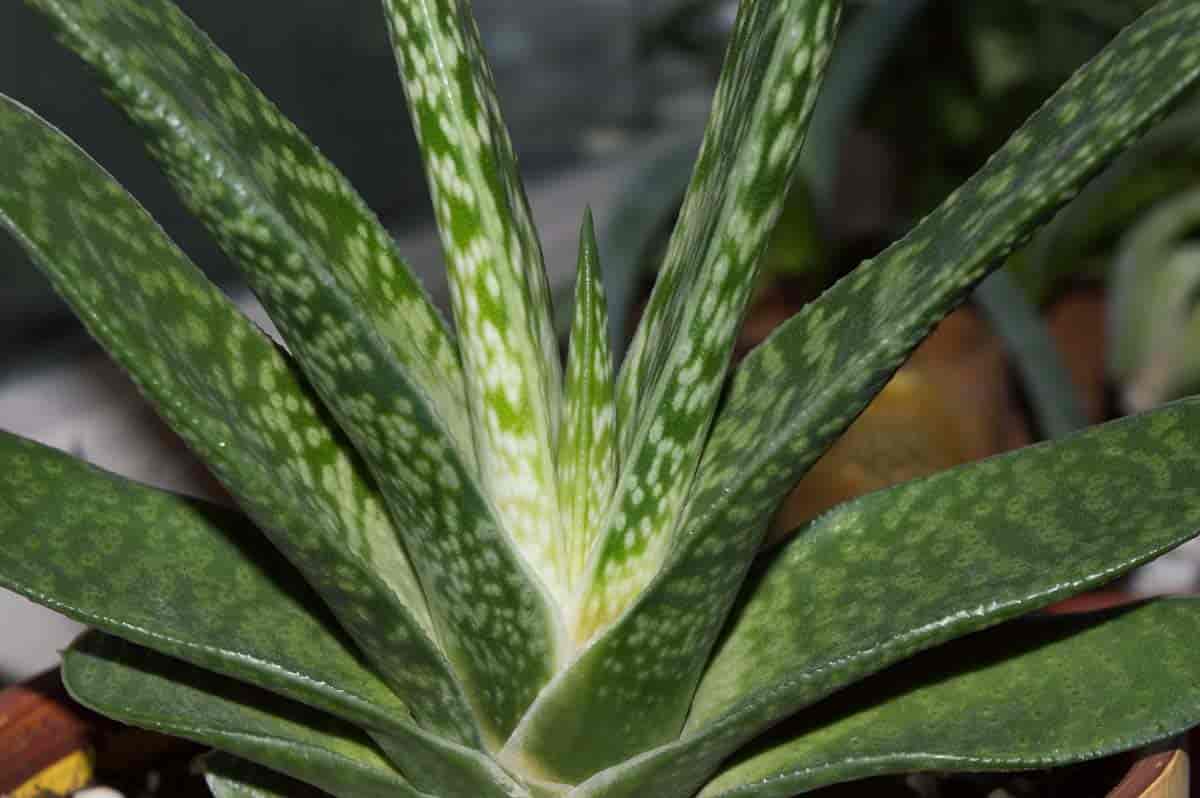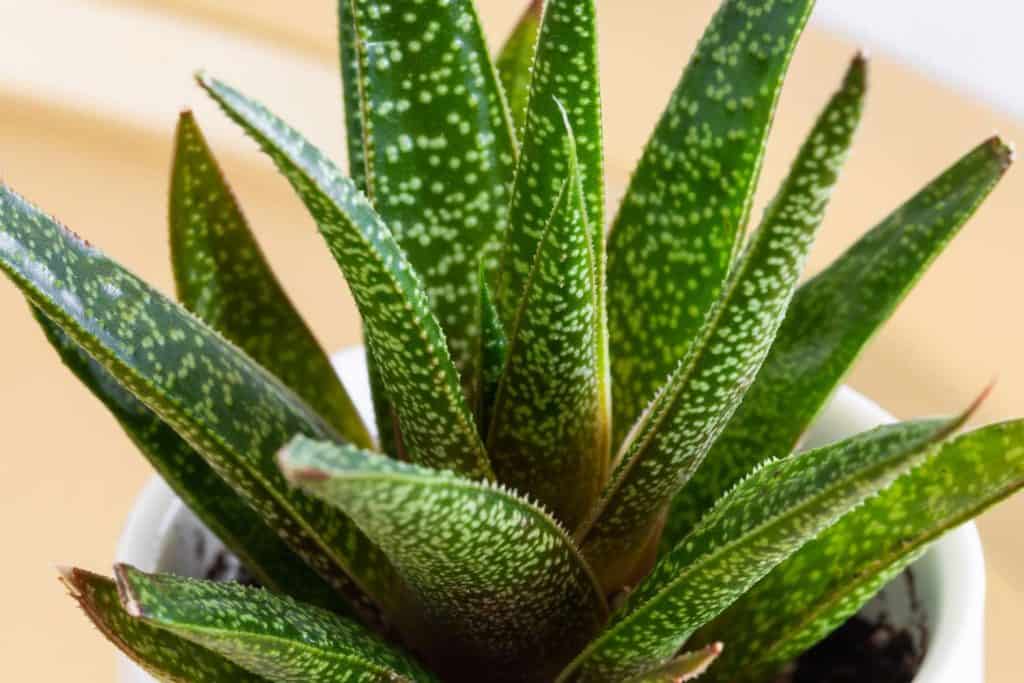Gasteria acinacifolia, also known as Dune Gasteria, is an attractive succulent plant native to South Africa that is becoming increasingly popular among terrarium hobbyists and collectors of succulents. Originally thought to be extinct in the wild, Gasteria acinacifolia was recently rediscovered in rocky outcroppings near the coast of South Africa.
It has since been identified as one of the easiest succulents to care for, making it an excellent choice if you’re just starting out in terrarium gardening or have had problems with plant care in the past.
Gasteria acinacifolia is a small, slow-growing succulent with thick, triangular leaves and waxy starburst flowers that bloom from winter to spring.
The Dune Gasteria makes a great low-maintenance houseplant that’s easy to grow indoors, even if you don’t have the best natural light in your home or office. This succulent plant will thrive as long as you provide it with good drainage and make sure it doesn’t stay too wet for too long at a time.
Origin and distribution
The Gasteria genus is found only in southern Africa, specifically in the provinces of the Eastern Cape, KwaZulu-Natal, and the Western Cape. They are adapted to a wide range of habitats, from rocky outcrops to sand dunes. The Dune Gasteria is one of around 80 species in the genus and is found in coastal areas of South Africa.
It gets its common name from its habit of growing on sand dunes near the sea. In nature, they can grow up to 1 meter high. If grown as a houseplant, they will never grow taller than 30 cm or 12 inches. As with other succulents, it prefers dry soil conditions and intense sunlight for most of the day.
Temperatures should be between 16°C – 25°C (60°F – 77°F). Watering should be done sparingly during the summer months, but twice a week during the winter months. Good drainage is essential for this plant, so do not let water sit in saucers beneath the pot where possible. Reaching maturity takes 10 years.
Gasteria acinacifolia propagation
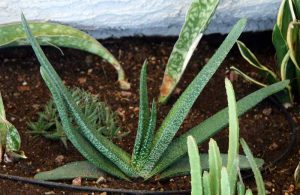
Gasteria acinacifolia can be propagated by offsets or leaf cuttings. To propagate by offsets, simply remove the offsets from the mother plant and pot them up in well-draining succulent soil. To propagate by leaf cuttings, snip a healthy leaf off at the base and allow it to callous over for a few days before potting it up in well-draining succulent soil.
While leaves will take a long time to grow roots on their own, some people have had success with putting their potted plants outside during the warmer months of the year.
Gasteria acinacifolia can be placed outside during the spring, summer, and fall; however, make sure that they are taken inside once nighttime temperatures start to drop below 50 degrees Fahrenheit.
Gasteria acinacifolia care information
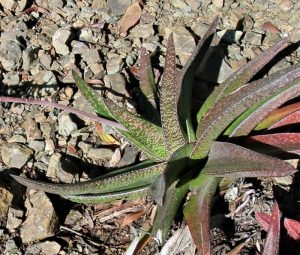
This hardy, low-maintenance succulent is perfect for those who want to add a bit of greenery to their home without having to put in too much effort. They can tolerate long periods of drought, making them ideal for those with busy schedules or forgetful watering habits.
Light requirement
This plant prefers bright, indirect light but can tolerate some direct sun. If the leaves start to lose their green color, this is a sign that the plant is getting too much direct sun and should be moved to a shadier spot.
However, if the leaves start to turn yellow, this means the plant isn’t getting enough light. You may need to place it in brighter conditions or use an artificial light source like a fluorescent bulb or grow light.
Note: Don’t put your dune gasteria in cold drafts or hot, dry places like next to heating vents!
Soil/potting mix
One of the great things about Gasteria acinacifolia is that it’s not picky about soil. In fact, it will do well in just about any type of potting mix. All you need to do is make sure that the mix is well-draining.
If you have heavy clay soil, add sand or perlite to lighten it up a bit. If your soil is sandy, adding some compost and/or peat moss will give your plant the nutrients it needs.
Watering
This hardy, drought-tolerant plant is perfect for those who forget to water their plants! Gasteria acinacifolia can go weeks without being watered and still look healthy. When you do water it, make sure to drench the soil and then let it dry out completely before watering again.
This plant does not like to be waterlogged, so make sure the pot has good drainage. If you are growing Gasteria in a container that doesn’t have holes in the bottom, add rocks or pebbles to create better drainage.
Fertilizer
Dune Gasterias are not heavy feeders, so a light application of fertilizer is all that is needed. You can use a balanced fertilizer such as 10-10-10 or something similar. Apply the fertilizer in early spring before new growth begins.
Be sure to water the plant thoroughly after applying fertilizer. The best time to fertilize your dune gasteria is in early spring before new growth starts.
Temperature
One important thing to remember when caring for your Gasteria acinacifolia is temperature. This plant is native to South Africa and thrives in warm weather. It can tolerate temperatures as low as 50 degrees Fahrenheit, but prefers temperatures between 70 and 85 degrees.
If you live in a cooler climate, you may need to provide some artificial heat for your plant. One way to do this is to place a heat mat under the pot. You can also bring the pot indoors during the winter months.
Humidity
Gasteria acinacifolia requires a little extra humidity in its potting mix to help it thrive. You can increase the humidity around your plant by setting the pot on a tray of pebbles and water or by grouping it with other plants. Be sure to never let the plant sit in water, as this will cause root rot.
The ideal humidity range is 40-60%. If you notice that your soil becomes too dry between watering, consider getting a self-watering container or using organic mulch to retain moisture.
A good rule of thumb is to check the soil before watering – if it’s dry halfway down the pot, then water thoroughly until moistened.
Pruning
If you want your Gasteria acinacifolia to look its best, you’ll need to give it a little bit of TLC in the form of pruning. Pruning helps encourage new growth and can also help remove any dead or damaged leaves.
Plus, it can also help improve the overall shape of your plant. One thing to keep in mind is that when performing pruning on a succulent like Gasteria acinacifolia, be sure not to cut too close to the base of the stem as this could promote rot. Once you’ve completed your desired cuts, use sterile sharp scissors for cleaner cuts.
Cut off the leaves that are closer to the bottom of the plant before cutting those at the top. Next, decide if you would like more light by trimming some lower leaves so they’re about an inch from where they meet with other leaf pairs, or more shade by trimming these same leaf pairs until they’re about three inches away from each other.
Finally, using just one hand at a time, gently snap off any stems below where you made your last cut.
When to repot
Gasteria acinacifolia is a slow-growing succulent, so it doesn’t need to be repotted often. Once every two to three years should be sufficient. In late winter or early spring, before the plant begins actively growing again, is the best time to repot. Before you remove the plant from its pot, fill up the new pot with soil and then position the root ball in it.
Keep an eye on your plants to make sure they don’t dry out during their first few days in their new home. Water them well and then keep them moderately moist until they’ve become accustomed to their new environment.
Dormancy/Winter rest
As the weather cools and days grow shorter, Gasteria acinacifolia will begin to enter dormancy. This is a resting period for the plant, and it’s important to allow it to happen.
During dormancy, the plant will stop growing and its leaves may turn brown. Don’t worry – this is normal! Just make sure to keep watering it regularly so the roots don’t dry out. You can also put your plant in an area with low light and cooler temperatures to help simulate winter conditions.
Gasteria acinacifolia flower & fragrance
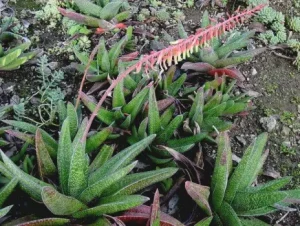
The flowers of the Gasteria acinacifolia are small and tubular and can be white, pink, or orange. They have a light fragrance that is similar to that of a lily.
Growth rate
Gasteria acinacifolia is a very slow-growing succulent, so don’t expect it to grow too quickly. It can take several years for this plant to reach its full size. When it does eventually grow, it can reach up to two feet tall and three feet wide.
The leaves of this plant are fleshy and often have sharp tips. They are green in color with white spots or stripes. The flowers of this plant are yellow or orange and blooming typically occurs in the springtime.
Toxicity
Gasteria acinacifolia is considered non-toxic to humans and animals. However, the sap of some species can cause skin irritation in sensitive individuals. If ingested, large amounts of any Gasteria species can cause stomach upset.
USDA hardiness zones
Gasteria acinacifolia thrives in USDA hardiness zones 9b-11. It is a slow grower, but it can grow up to 2 inches a year. The dune gasteria requires bright light and will thrive when placed outside during the summer months.
Pests and diseases
This slow-growing, evergreen succulent is very easy to care for. It is tolerant of a wide range of conditions and can even survive some neglect. However, there are a few things to watch out for.
These include mealybugs, scale, and root rot. Mealybugs can be controlled with regular insecticidal soap sprays. Scale can be controlled with horticultural oil sprays. Root rot is a serious problem that can kill the plant.
To prevent this from happening, you should keep it in an area where water does not collect. You should also make sure that the pot has adequate drainage holes and is planted in cactus mix or sand.
Another thing you should do is never leave your plant sitting in stagnant water or soil for too long; always let it dry out before watering again.
